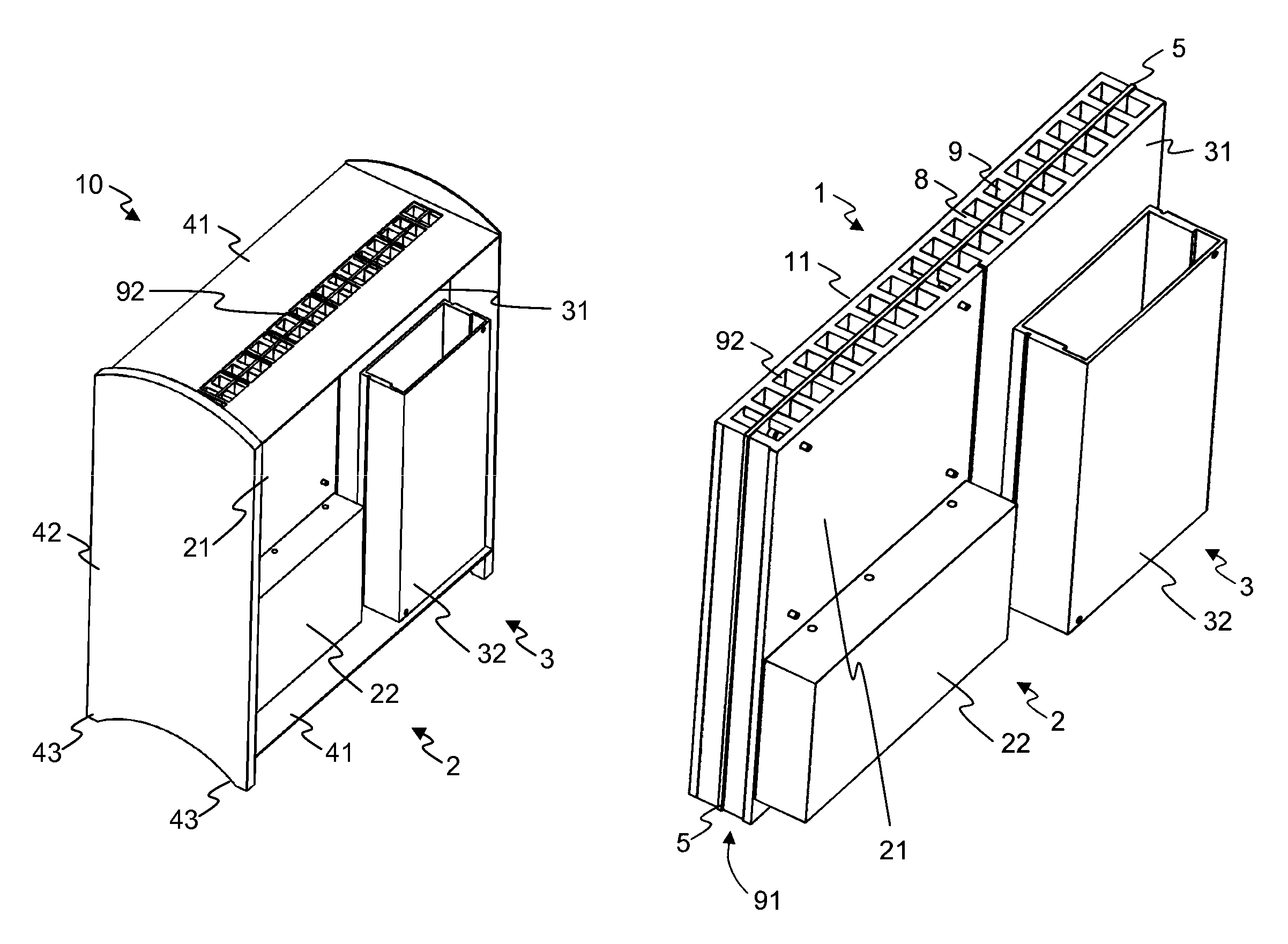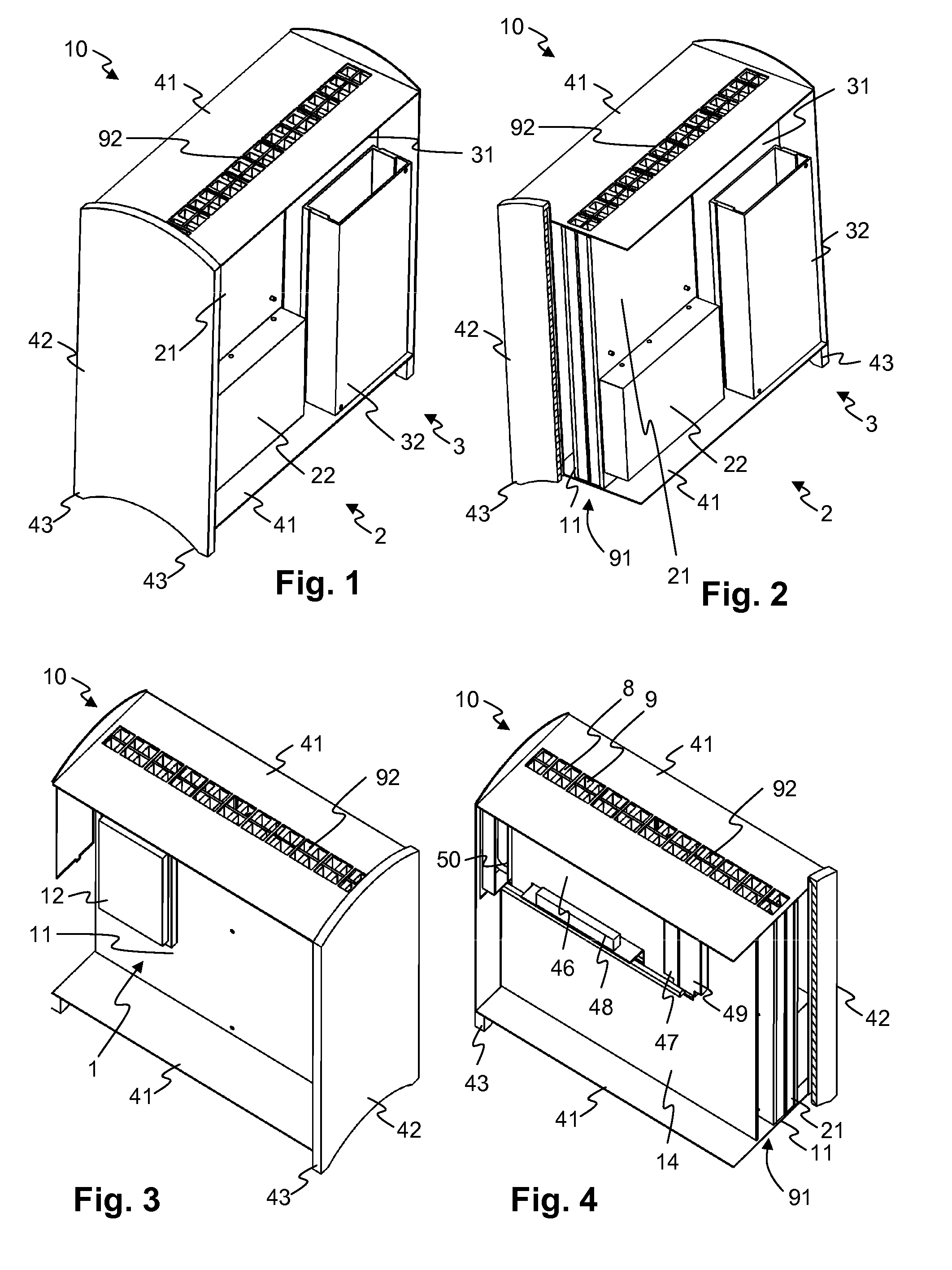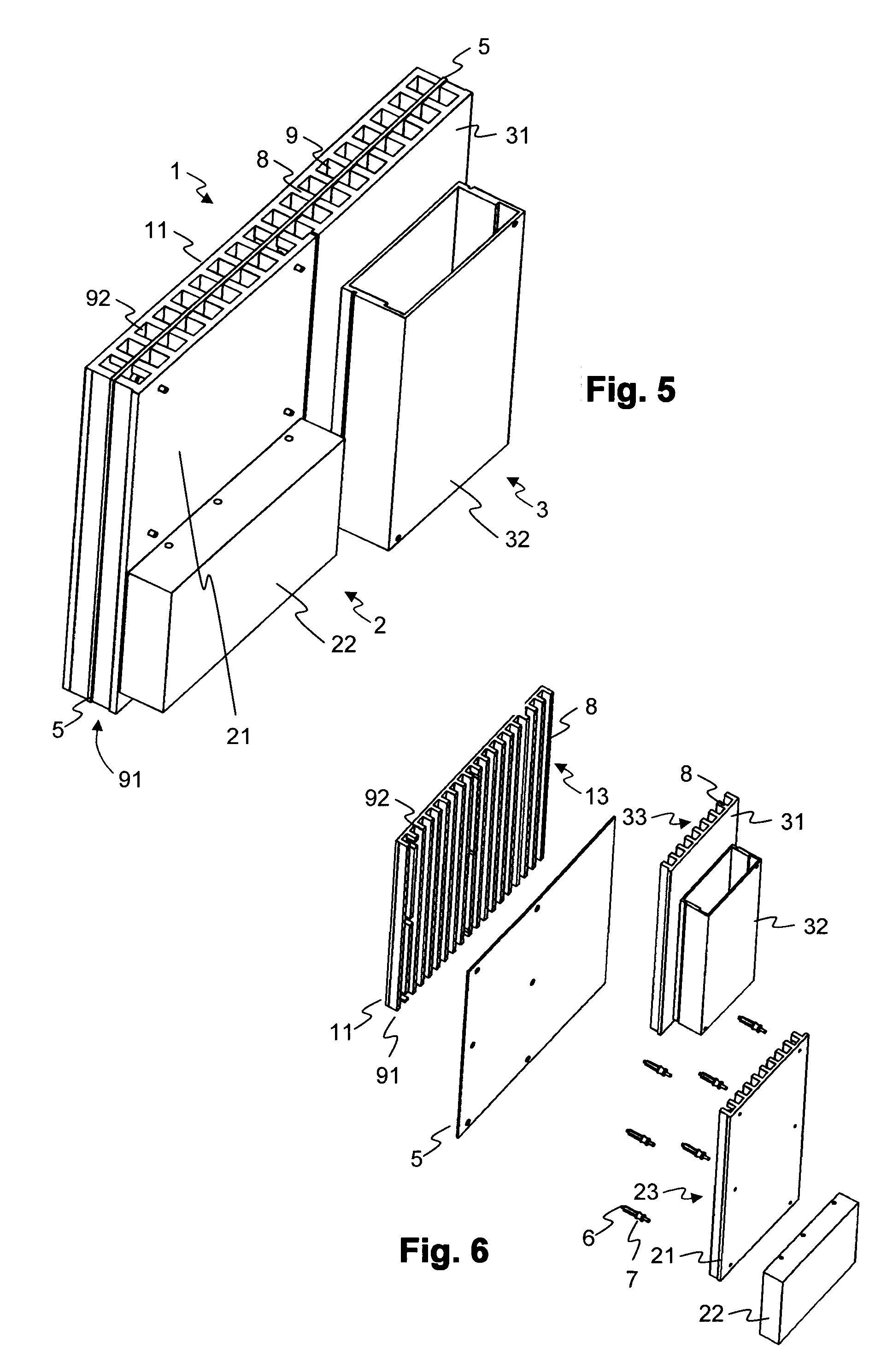Passively cooled computer
a computer and passive cooling technology, applied in the field of passive cooling computers, can solve the problems of insufficient power dissipation, limited power dissipation, and uncomfortable temperature of the cooling elements, so as to reduce thermal bridges, improve thermal decoupling of the units, and reduce the waste heat of the computer
- Summary
- Abstract
- Description
- Claims
- Application Information
AI Technical Summary
Benefits of technology
Problems solved by technology
Method used
Image
Examples
Embodiment Construction
[0032]The main elements of a computer cooled according to the invention are shown in FIGS. 1 to 4. The computer is shown in its operating condition, that is, with vertically oriented cooling channels. The main elements of the cooling arrangement alone are shown in FIGS. 5 to 7.
[0033]The computer 10 comprises several units 1, 2, 3 which are arranged in a housing 4 with a load carrying housing frame 41:[0034]A processor unit 1 with one or more processors 12 and further elements typically arranged on a motherboard of a computer. The processor 12 and optionally also some of the further elements are thermally coupled to a processor cooling body 11, for example by mechanically pressing them against one another, with a thermally conductive material placed in-between for bridging gaps. The processor cooling body 11 is, in a border area, attached to the housing frame 41.[0035]A hard disk unit 2 with one or more hard disks 22. The hard disk unit(s) 2 are thermally coupled to a hard disk cooli...
PUM
 Login to View More
Login to View More Abstract
Description
Claims
Application Information
 Login to View More
Login to View More - R&D
- Intellectual Property
- Life Sciences
- Materials
- Tech Scout
- Unparalleled Data Quality
- Higher Quality Content
- 60% Fewer Hallucinations
Browse by: Latest US Patents, China's latest patents, Technical Efficacy Thesaurus, Application Domain, Technology Topic, Popular Technical Reports.
© 2025 PatSnap. All rights reserved.Legal|Privacy policy|Modern Slavery Act Transparency Statement|Sitemap|About US| Contact US: help@patsnap.com



